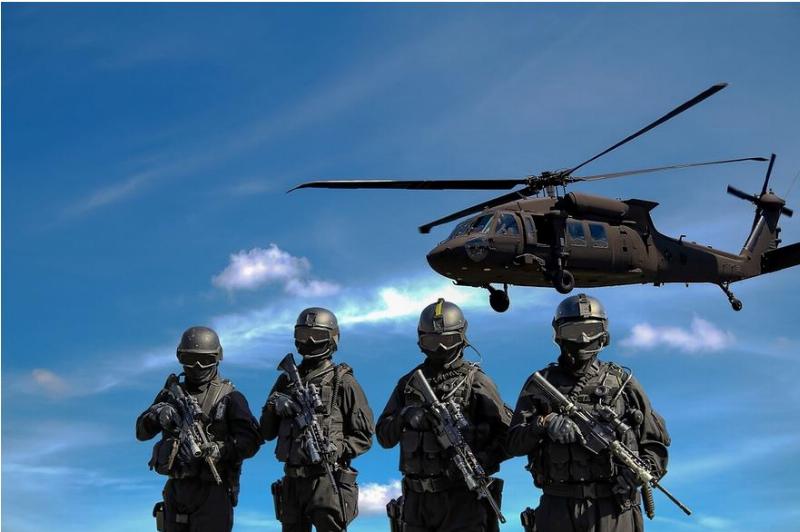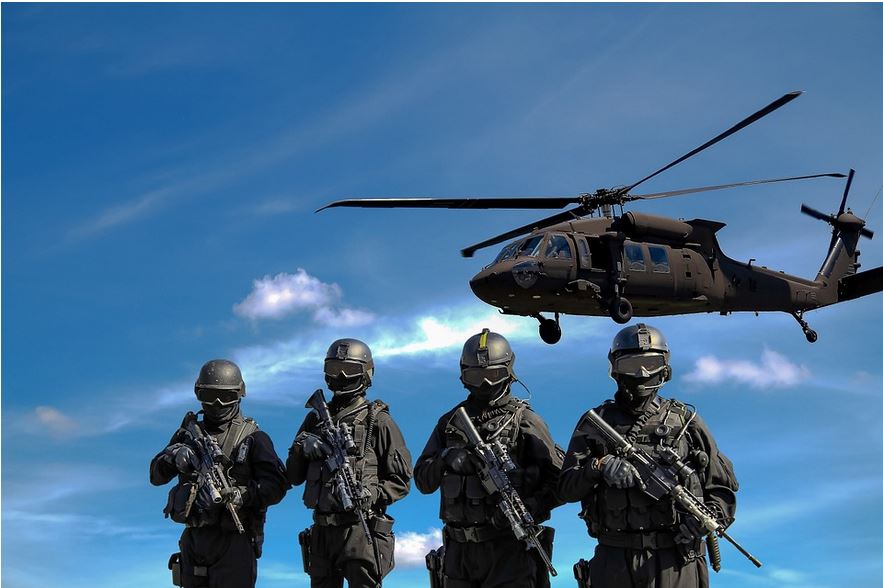

The behavior of the current U.S. administration toward Iran, in continuation of the policies of the Obama administration, has been appeasement on a monumental scale.
That’s evident in the financial tribute facilitated and released to Iran; the lack of effective action to circumscribe Iran’s expansion of its influence in the Middle East; the failure to counter effectively Iran’s terrorism against America and its friends in the region; the failure to curb Iran’s development of a nuclear arsenal; and the failure to arrest Iran’s development of short and long range missiles to deliver those weapons, not only against targets in the Middle East, but also against targets in Europe and America.
This appeasement is so breathtakingly pervasive that one may reasonably conclude that the United States is abandoning its traditional regional friends and is courting Iran as an ally of the U.S., and as the potential hegemon of the Middle East.
Even if the administration were to change course today, it has already lost critical effective deterrence against Iran.
Military historian and classicist Victor Davis Hanson has repeatedly made the point that a nation’s loss of strategic deterrence may cause a weaker potential enemy to conclude that its stronger adversary will never use its power to thwart it, and thus feel free to take aggressive action which leads to open warfare.
Dr. Hanson’s prime example is WWII, which expanded in 1942 to the disaster it became due to loss of deterrence by the Western Allies against Germany in the 1930s.
In a 2017 essay for the Hoover Institution, he wrote:
To be effective, deterrence must be unambiguous and understood. It should have been folly for the smaller Axis powers to take on the combined might of an undefeated Britain, a neutral America, and a colluding Soviet Union in 1941. But they had at least one good reason to do so: Before 1939, the Allies had not properly rearmed nor made it clear to Germany and Japan that their overwhelming strength would inevitably crush the fascist powers.
War, however, is a tragic laboratory that corrects such impressions. Sadly, aggressors often mistake magnanimity for weakness and the lack of preparation for an inability—rather than a temporary and correctable reluctance—to arm. These are tragic lessons that seem backward or even dangerous in peace, and so over the ages have to be relearned at great cost through war.
Germany, Italy, and Japan learned that deadly lesson in 1942, just months after starting an expansion of a previously successful war that they now had no way of winning.
In his book The Second World Wars, Dr. Hanson concludes that France and Britain’s failure to exercise their legal right to stop German rearmament between the world wars, and their failure to intervene militarily to stop Germany’s expansion in Europe from 1937 through the spring of 1940; combined with America’s isolationism and failure to mobilize its industrial base to rearm; and the Soviet Union’s non-aggression pact with Germany, resulted in Hitler’s belief that the eventual Allies were a paper tiger.
This caused Hitler to make two fatal errors: His invasion of his then ally, the Soviet Union, on June 22, 1941, and his declaration of war against the United States on Dec. 11, 1941.
On Dec. 8, 1941, one day after the Japanese attack on the Hawaiian Islands, the U.S. declared war, but only against Japan, not against Germany. For many reasons, it was unclear whether Congress would have declared war on Germany, which had not attacked the U.S., so on Dec. 8 President Roosevelt did not ask it to do so.
Germany was required by its Axis alliance with Italy and Japan to declare war only against a nation which attacked one of its Axis partners, which the U.S. had not done. Their pact did not require Germany to declare war against a nation attacked by Japan. Nonetheless, Hitler voluntarily brought the United States into the war against Germany by declaring war against the United States.
Hitler believed that the British and Americans lacked the moral fortitude or the will to exercise their military strength to stop him. It took another three and one-half years of brutal warfare, and about 45 million civilian and 15 million military deaths, to prove him wrong.
In the Middle East, Iran has planned, and operationally implemented, a strategy to become the hegemon of the entire region. It has created and controls various militant proxies, large and small, consisting of Shia militias in Iraq and Syria; Hezb’allah in Lebanon; Hamas in Gaza; and the Ansar Allah Houthis in Yemen, who are now successfully interdicting international trade and freedom of navigation of Western nations.
All of these proxies are armed and tasked by the Iranian government and its Revolutionary Guard Corps (IRGC). Iran is supported in this strategy by, if not formally allied with, Russia, China, and North Korea. It is significant that the navies of Iran, Russia, and China have recently completed combined naval maneuvers in the Gulf of Oman.
The Iran proxies mount attacks not only against Israel, but also against U.S. troops and facilities in the region. The Iranian proxy attacks specifically against U.S. forces in the Middle East draw little military response from the U.S., even when American troops are killed or wounded. When the U.S. does respond, it is invariably with a small military strike against the proxy, but never against the principal, the Islamic Republic of Iran. Strong as its military presence is in the region, the United States has failed to use it to effect, thus squandering all deterrence against Iran, which continues to implement its murderous strategy as it pleases.
The goal of the U.S. government in the Middle East is not to identify and solve any underlying problems, but rather to keep the lid on all fighting in the region, probably at least until the presidential election of November 2024. This U.S. administration seems willing to continue to support Iran, to sacrifice the Jewish State, and to risk the murder of millions of Jews, for a political goal of keeping the Middle East relatively quiet — for now.
On Dec. 7, 2023, Army Gen. Mark Milley, then Chairman of the U.S. Joint Chiefs of Staff, spoke with World War II veterans who were in Washington, D.C. to mark the 80th anniversary of the attack on Pearl Harbor. He told the veterans:
Great power war is horrible. We want to keep it a great power competition, and not get into great power war. And the way to do that is through deterrence. The way to do that is to have a very capable military, and demonstrate the will to use that if necessary to deter any opponent.
Unfortunately, the U.S. administration, which included Gen. Milley until recently, has given the rulers of Iran no indication that it will, in fact, take any effective action to block the conduct of their ongoing campaign to take over the Middle East. This policy fails Gen. Milley’s deterrence test: It has demonstrated that although there actually is a necessity to use force against Iran, the United States does not have the will to use its very capable military to deter Iran, which remains undeterred from pursuing its goals.
Because the U.S. administration has indicated that it is not willing to use force against Iran to stop its expansionary program, the U.S. may eventually have to resort to war to do so, when either this administration or the next finally determines that Iran has overreached.
Based upon Iran’s and Washington’s actions during the Obama and Biden administrations, it is legitimate to ask whether the Biden administration’s actual foreign policy goal is to facilitate the elevation of Iran to the position of hegemon over the entire Middle East region, to the detriment of both Israel and the American people.
Michael S. Goldstein, Esq. is Arizona State Director of Proclaiming Justice to the Nations. He is a 30-year veteran of the United States Navy and of the U.S. intelligence community. His articles appear in American Thinker.
Image: Pixabay / Pixabay License






